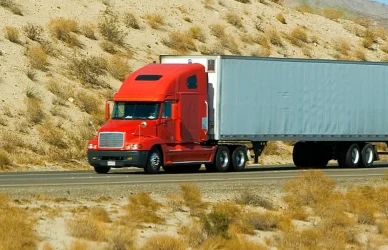The trucking industry has experienced its biggest blow yet since the onset of the COVID-19 pandemic. According to the most recent data from the Bureau of Labor Statistics, a staggering 37,000 trucking jobs were lost in August alone. This marks the largest decline in employment since April 2020 when a devastating 84,500 jobs were eliminated.
The downward trend continued in the preceding months, with a decrease of 3,500 trucking jobs in July and a loss of over 1,000 jobs in June. The implications of this worrying trend are far-reaching and highlight the challenges faced by the industry as it navigates through these trying times.
David Spencer, the vice president of market intelligence at Arrive Logistics, has shed some light on the situation. He attributes the significant decrease in trucking jobs to the Yellow Corp. bankruptcy, which has had a profound impact on tens of thousands of drivers. Spencer warns that more job losses may be on the horizon.
“The key takeaway when considering all of the recent information that has been made available is that trucking conditions are as tough as we thought they were,” he said. “The spot rate remains below the cost to operate a truck, and savings are running out quickly for carriers. It appears the cyclical nature of trucking continues. Looking forward, I expect it to get worse before it gets better in terms of trucking conditions and employment levels. However, as tough as it is to see, capacity leaving the market can be a good thing for those who can survive the current environment. Ultimately, this trend is what will set up market vulnerability, enabling the next inflationary cycle. I’m still predicting this to occur in the later part of the first half of 2024 (Q2).”
After experiencing a rise of almost 61,000 last year, trucking jobs have seen a decrease of 39,500 this year. Looking at the broader transportation sector, employment has dropped by over 34,000 jobs. This year alone, transportation jobs have declined five times, compared to only two times in the past since the pandemic began.
Out of all the subsectors, trucking experienced the biggest monthly decrease, followed by couriers/messengers and rail transport. However, transit/ground passenger transportation saw an increase of 5,500 jobs, leading the way among the subsectors.
The latest numbers reveal that employment in the transportation sector dropped by 10,000 in July. June’s revised numbers show an even bigger decrease of over 19,000 jobs, which is higher than initially reported.
Year to date, transportation employment has seen a decline of almost 30,000 jobs. In 2022, however, overall transportation employment has surged by a remarkable 261,000 jobs.
Wages in the transportation and warehousing sector saw an increase in August. The average weekly earnings for all employees rose by $2.41 to reach $1,119.00. Hourly earnings also saw a boost, going up to $29.37 from $27.92 compared to August 2022. However, for production and nonsupervisory employees, average weekly earnings decreased slightly from $1,049.79 in July to $1,046.83. On a positive note, weekly earnings increased by $1.81 to $27.99 compared to the same time last year.
The economy experienced a significant gain in jobs across all industries, with nearly 190,000 positions added; however, the unemployment rate rose from 3.5% to 3.8%. Specifically in the transportation and material moving occupations, the unemployment rate increased to 5.8% from 5.1% when compared to the previous year.
The latest data from the Bureau of Labor Statistics reveals that the consumer price index has risen by 3.2% over the past 12 months. In July, there was a monthly increase of 0.2%, driven by higher costs in areas such as shelter, gasoline, and food. Excluding food and energy, the index for all other items rose by 0.2%, showing a 4.7% increase over the year.
Source: Land Line











